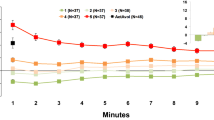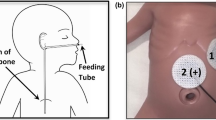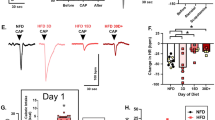Abstract
ABSTRACT: Vagal responsivity to orogastric stimulation is necessary for gastrointestinal function and may reflect antonomic regulation. Our study evaluated vagal responsivity during gavage feeding as an index of preterm clinical status. Vagal and behavioral responsivity of 26 preterm infants during gavage feeding was measured. Vagal tone was quantified with a noninvasive measure (vagal tone index) developed by Porges (Porges SW: U.S. patent 4 510 944, 1985), which extracts a valid measure of cardiac vagal tone from the ECG. The study investigated whether vagal tone changed during gavage feeding and whether individual differences in the vagal tone response pattern were related to clinical outcome. Infants who demonstrated an increase in vagal tone during feeding and a decrease after feeding had significantly shorter hospitalizations. This effect was independent of weight gain trajectories. Baseline levels of vagal tone were positively associated with subsequent weight gain. Traditional risk measures did not predict length of hospitalization independently of gestational age. This study represents the first documentation that small changes in cardiac vagal tone during gavage feeding, previously imperceptible to clinicians and researchers, may be quantitatively extracted from the ECG and provide an important index of clinical status.
Similar content being viewed by others
Log in or create a free account to read this content
Gain free access to this article, as well as selected content from this journal and more on nature.com
or
Author information
Authors and Affiliations
Rights and permissions
About this article
Cite this article
Dipietro, J., Porges, S. Vagal Responsiveness to Gavage Feeding as an Index of Preterm Status. Pediatr Res 29, 231–236 (1991). https://doi.org/10.1203/00006450-199103000-00003
Received:
Accepted:
Issue date:
DOI: https://doi.org/10.1203/00006450-199103000-00003
This article is cited by
-
Attention-deficit hyperactivity disorder and cardiac vagal control: a systematic review
ADHD Attention Deficit and Hyperactivity Disorders (2012)



